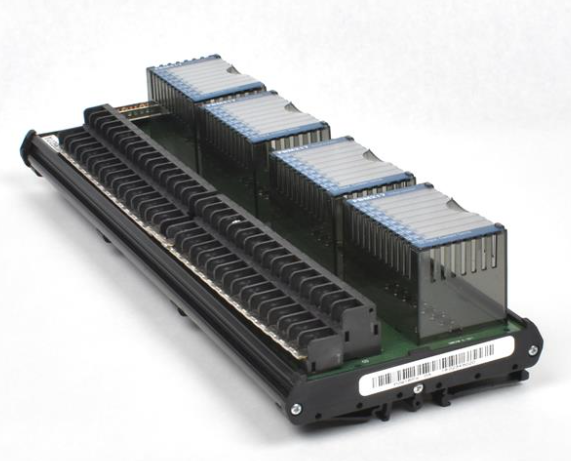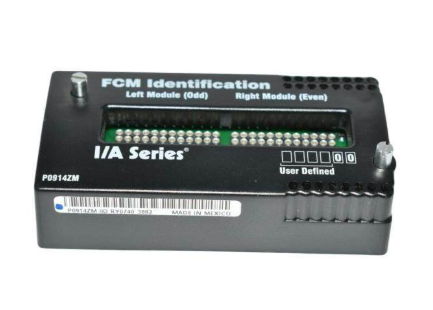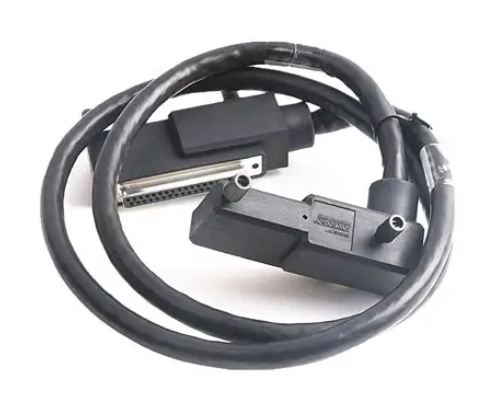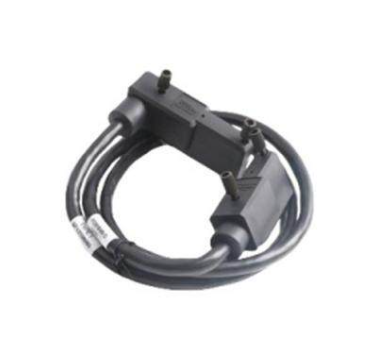What is the impact of monochrome black and four-color black on printing
"Monochrome black" and "four-color black" is an old question. Since the popularization of modern printing technology, almost every designer has encountered the problem of monochrome black and four-color black. However, it is such an ancient and universal problem that has not yet been solved.
Why? The reason is simple: this problem does not exist in theory, only in practice. In other words, it didn't make sense, but it happened.
What is monochrome black?
To understand what monochromatic black is, we must first talk about what CMYK is. In modern printing presses, a total of four colors of ink are used, which are cyan (C), magenta (M), yellow (Y) and black (K), and any color is mixed with these four inks.
For example, I tell you that the CMYK value of a dot color is: C-100 M-50 Y-0 K-0, which means that on the metal plate used for printing, the corresponding dot cyan (C) is fully painted, magenta (M) is half painted, yellow (Y) and black (K) are not painted. Therefore, the color can also be described as: 100% cyan and 50% magenta.
For monochrome black, its CMYK value is: C-0 M-0 Y-0 K-100. That is: 100% black.
100% Black is called "Pure black" or "100% Pure Black" in English. How dark is it? It's actually not very black, and it doesn't even reach the bottom of the color picker.
However, 100% black ink, why not black enough? How can you not even reach the bottom of the color picker? How is it equivalent to a reddish gray like #231F20? The answer is simple: our ink is not pure.
Unfortunately, so far, we have not objectively produced a "pure black" ink process - and may never be able to. Although technically there is still room for improvement with the existing standard black (K) ink, because it is already fixed as a standard printing ink, subjectively we have not tried to change it further.
What is four-color black?
What about four shades of black? Do you use cyan (C), magenta (M), yellow (Y) and black (K) inks at the same time? That's the right answer. It is because the monochrome black is not "black" enough, we came up with the idea of "mixing four kinds of ink to get a blacker ink".

Compared to monochrome black, four-color black is a broad concept. As long as the naked eye feels close to black, and 4-color ink is used, it can be defined as four-color black. C-60 M-40 Y-40 K-100 is four-color black, C-100 M-100 Y-100 K-100 is four-color black, C-80 M-80 Y-80 K-90 is also four-color black. Simply put, four-color black is darker than monochrome black:
Four-color Black is also called Rich Black, English is called "rich black". There is a special four-color Black, called "True Black", or "true black" in English. There is a recognized standard for true black CMYK values: C-75 M-68 Y-67 K-90. Many professional companies use four-color black close to real black, such as the American commercial printing company 4over uses C-60 M-40 Y-40 K-100, which is the color in the previous picture.
In general, as long as the four-color black used and the above accepted standard error is within 7%, you can get a very black black, and there is no visible color bias. Below is the "true black" and you can see that it looks the same as the four black colors above, although the CMYK values are different.
In general, four-color black is "darker" than monochromatic black. Note that under different environments, the values in the color palette may be different, which is related to the color profile, and will not be described here. It's enough to know that they look the same.
Why do some people reject four shades of black?
Since "four-colored black" is closer to our idea of "black" than "monochromatic black", there is no reason not to use four-colored black, is there? In theory, yes.
In fact, many designers will replace some monochrome black with four-color black in order to create a thick feeling. However, this operation has been criticized by many people, in their view, the four colors of black is absolutely not touched. This is not without basis, and their basis comes from the only test of truth - practice.
We just said that 100% black ink is not black enough, this is a technical problem, because completely non-reflective ink is not done. Similarly, the perfect mixing of four colors of ink is also technically difficult to guarantee, and the problem of four-color black is also generated.
In printing, we will brush four colors of ink on four copper plates, and then press the four copper plates on the paper in turn, which is called the plate. In theory, of course, the four copper plates should be perfectly aligned. However, the reality is that the operator's technology is uneven, and the advanced nature and maintenance level of the printing press are also uneven, so the uneven version is inevitable. Exaggerate a little, like the picture below.
The reality is not so exaggerated, but the situation of four color pairs is common. The more detailed the printed content, the easier it is to see the uneven situation. For English text, less than 6 characters will easily appear the phenomenon of 4 color black pairs; For more complex Chinese texts, especially typefaces with thin strokes such as Song typefaces, 14 characters can be overturned.
For designers, there is no way to avoid such technical problems, except to make the most direct choice to avoid them altogether: simply do not fill the text with four-colored black. What is more, the entire design draft can not appear four colors of black.
Is it necessary to completely eliminate four shades of black?
No, and I don't have to. The use of four-color black does have hidden dangers, but the problem is not so serious, but it is demonized by a group of old masters who know half the solution.

Let's first take an example to refute, in Adobe Illustrator, the authoritative graphic design software, in the basic color palette, defined a color called CMYK green, as shown in the figure:
CMYK green has a color value of C-100 M-0 Y-100 K-0, which means only cyan and yellow are used. Do cyan and yellow necessarily line up because there are only two copper plates? It is safe to say that if four pieces of copper are not aligned, two pieces will be equally aligned.
Whether you are "four-color black" or "two-color green" or "three-color green", as long as there is more than 1 ink, there is bound to be a problem of inconsistency. According to the "four colors of black" can not be used logic, not all colors can not be used?
The reason why only four colors of black are demonized is because of three points:
Most of the works contain text, and the text is mostly black.
The text is small in size and fine in line, at least compared to the graphics on most works.
Because of the need to read, people observe the text more carefully.
It is such a common problem in printing that it has been buckled on the head of four black colors.
When can I use four shades of black?
Although the text with four-color black will appear "fuzzy" problem, replaced by other plate colors are also common, but monochrome black is definitely not a problem.
If the text uses a monochromatic black such as C-0 M-0 Y-0 K-100, or a gray such as C-0 M-0 Y-0 K-80, there is no problem of mismatching because the ink required for the text only appears on one copper plate. In other words, if conditions permit, the text should be small and monochromatic black.
In other cases, four-color black is not too taboo. For example, if the title text is relatively large, you can use four-color black in the title, and use monochrome black in the body. While you may not be able to tell the difference in color at once, you can feel the extra weight of the title.
In other cases, such as using four shades of black for illustration (not diagrams), making shadows, etc., there is not necessarily a problem. As long as the four-color black is avoided for a more delicate path, the plate error will not have much impact.
In general, in order to avoid the negative effects of four colors of black, the best way is to avoid using it in the text and other places that should not be used. The script of "four-color black to one-color black" circulating on the Internet is not reliable, this change does not make sense, and may change the effect of the work.
As long as it is used properly, four-color black is undoubtedly the best black.
- EMERSON
- Honeywell
- CTI
- Rolls-Royce
- General Electric
- Woodward
- Yaskawa
- xYCOM
- Motorola
- Siemens
- Rockwell
- ABB
- B&R
- HIMA
- Construction site
- electricity
- Automobile market
- PLC
- DCS
- Motor drivers
- VSD
- Implications
- cement
- CO2
- CEM
- methane
- Artificial intelligence
- Titanic
- Solar energy
- Hydrogen fuel cell
- Hydrogen and fuel cells
- Hydrogen and oxygen fuel cells
- tyre
- Chemical fiber
- dynamo
- corpuscle
- Pulp and paper
- printing
- fossil
- FANUC
- Food and beverage
- Life science
- Sewage treatment
- Personal care
- electricity
- boats
- infrastructure
- Automobile industry
- metallurgy
- Nuclear power generation
- Geothermal power generation
- Water and wastewater
- Infrastructure construction
- Mine hazard
- steel
- papermaking
- Natural gas industry
- Infrastructure construction
- Power and energy
- Rubber and plastic
- Renewable energy
- pharmacy
- mining
- Plastic industry
- Schneider
- Kongsberg
- NI
- Wind energy
- International petroleum
- International new energy network
- gas
- WATLOW
- ProSoft
- SEW
- wind
- ADVANCED
- Reliance
- YOKOGAWA
- TRICONEX
- FOXBORO
- METSO
- MAN
- Advantest
- ADVANCED
- ALSTOM
- Control Wave
- AB
- AMAT
- STUDER
- KONGSBERG
- MOTOROLA
- DANAHER MOTION
- Bently
- Galil
- EATON
- MOLEX
- Triconex
- DEIF
- B&W
- ZYGO
- Aerotech
- DANFOSS
- KOLLMORGEN
- Beijer
- Endress+Hauser
- MOOG
- KB
- Moxa
- Rexroth
- YAMAHA
- Johnson
- Westinghouse
- WAGO
- TOSHIBA
- TEKTRONIX


Email:wang@kongjiangauto.com



































































































































